Eurail Passes are famous as a way to save money while exploring Europe, but they are also confusing and often misunderstood. They are still an amazing money-saving tool for certain types of travelers, and not a wise idea for most others. Before Europe introduced dynamic rail pricing (like airfares, where the price varies depending on when you buy it), a Eurail Pass was an easy way to save money since all tickets had fixed prices that were generally fairly expensive. These days most travelers can save far more money just by buying their train tickets at least a few weeks in advance.
That said, Eurail Passes are still great for longer trips and especially for people who like to make plans as they go. Dynamic rail pricing made advanced tickets much cheaper, but it also made last-minute tickets MUCH more expensive. Below we will discuss Eurail Passes and whether they are a good idea for your trip or not.
Disclosure: This is a reader-supported website and some of the links are affiliate links where a small commission is paid to help keep this site going.
Note: This article was written in 2012 and has been continuously updated since then, so all information is current as of April, 2024.
Eurail 2024 changes: New countries and a mobile version
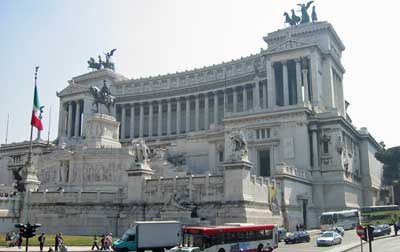
Aside from that it’s just the normal fact that they have updated the timetables as of December 2023 and have a few promotions going on, but those usually don’t happen over the busy summer season.
Eurail passes are now available in a mobile version
Until very recently, Eurail Passes were only available in paper form and they were quite confusing at first. You’d get a pass with a series of empty boxes on it and you’d need to enter your trip before you’d use your pass each day and then have the first conductor verify it. If you lost your ticket (and this was not uncommon), it was a whole ordeal to attempt to get a replacement.
Again in 2024 Eurail offers a fully mobile version that is delivered instantly to your mobile device with no delivery fee. And if you somehow lose your phone, you can resume using your Pass on your replacement with no extra headache. This is MUCH more convenient in every way and as long as you can keep track of your phone you’ll always have your train pass handy.
If your trip will be 2 weeks or less, a Eurail Pass probably won't be worth it

Eurail Passes are ideal for travelers on longer trips, and especially those who don’t want to plan all of their destinations and dates far in advance. If you have your itinerary pretty much planned out and you don’t require much flexibility, you’ll be far better off just locking in your dates and buying your train tickets as early as you can. Again, they can be surprisingly cheap if you buy 2 to 4 months out.
If you are age 27 or younger, a Eurail Pass is probably worth it

With this in mind, if you are lucky enough to still be 27 or younger, you should seriously think about getting a Eurail Global Pass Youth, partly because the sense of freedom instantly gets more expensive at age 28. The age cutoff was 25 until recently, so this change is a great deal for anyone who will be 26 or 27 at the start of their trip.
You aren’t guaranteed to save money by buying a Youth Eurail Pass, but chances are good that you WILL save money and you’ll definitely save a lot of hassle as well. Especially now that Eurail Passes come in a mobile form, it’s even that much more convenient to just hop aboard any train that is about to leave the station and not worry about buying or even having a ticket. Especially for young people, it can be really fun and exhilarating to literally just walk into a train station with your backpack and look at the departure board and then decide where to go at that moment.
If you are age 60 or over, a Eurail Pass could also be great value
Another fairly recent change is that anyone who is 60 years or older at the start of the use of a Eurail Pass now gets 10% off the normal adult fare. That new discount is going to make this a great value for many travelers who might have been on the fence about buying a full-price pass before.
>>>Check prices on Eurail Passes
If you are planning on traveling in 1st Class anyway, a Eurail Pass is probably worth it
Most 2nd Class trains provide similar comfort and legroom to Business Class airline seats, or at least close enough, so for most people it’s not worth the added expense for 1st Class. However, if you are rich or elderly or fear contact with strangers, a 1st Class Eurail Pass is probably worth it no matter what.
Not only do you get much more comfort and legroom in 1st Class, with only 3 seats across instead of 4, but there is another advantage to 1st Class on European trains. Since it’s mostly business travelers and wealthy people traveling in 1st Class, the carriages are almost always mostly empty except in the mornings and late afternoons between large cities. In 2nd Class the only available seats might be two seats in an 8-seat cabin with all the other seats taken up by a loud family or a group of rowdy friends. In 1st Class you are all but guaranteed a peaceful ride, and usually plenty of empty seats from which to choose.
A hidden Eurail Pass benefit: Making extra stops on travel days for free
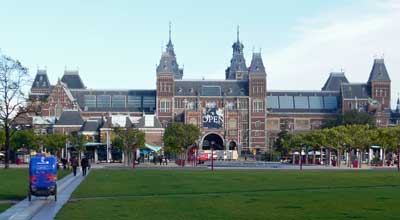
Brussels in particular is one I recommend a short stop in because the small historic center around what they called the Grand Place is amazing and gorgeous, while the rest of the city is rather boring by European standards. With a Eurail Pass you can jump off the train in Brussels and explore the city center for a few hours (luggage storage is cheap and easy) and maybe have lunch, and then hop on a later train to complete your journey to Amsterdam. There are opportunities like this on many if not most trips between larger cities, and if you buy the point-to-point tickets you have to stay on the train you booked.
Another example is the high-speed train between Barcelona and Madrid, which takes about 2.5 to 3 hours in each direction. There are some interesting cities in between, but in this case you could take a morning train from Barcelona to Madrid and then check into your accommodation, and then hop on another train from Madrid to Toledo, which takes about 30 minutes and costs €14 each way. Toledo is a historic and fascinating town, but it’s also pretty small and you can explore the main sights in an afternoon. With a Flexi Eurail Pass where you buy a certain number of travel days, you can save more money by adding on these sorts of nearby stops on travel days.
If you'll be touring major cities within ONE country, a single-country pass might be perfect, and Second Class passes are available for all ages
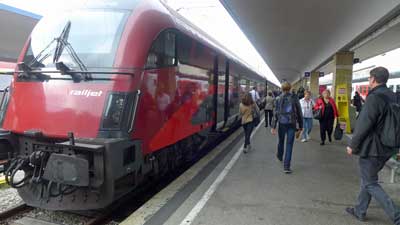
Single-country passes are still available and they MIGHT be good value for you, but it depends on which country and how much traveling you’ll be doing. If you plan on going all over a larger country such as Germany, France, or Spain, and especially if you like to make plans as you go, a Single-country pass for one of those might be your best deal. On the other hand, smaller countries (such as the Netherlands) or countries where train tickets are already fairly cheap (such as Italy) might be harder to get value out of. Long story short, for single-country passes you really need to check fares of the places you plan on going and see how they add up compared to the pass.
>>>Check prices for Single Country Passes
Eurostar (between London and Paris or Brussels or Amsterdam) tickets are now included for Eurail Pass holders for a €30 reservation fee
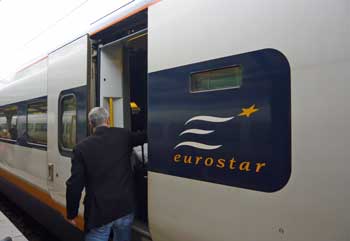
Our recent tests show that Eurostar fares one-way from London to Paris can be as low as €49 if you book about 3 months out, or as expensive as €214 for the same seat if you wait until the day of travel to buy. Round-trip/return tickets can be even cheaper if there is a promotion running.
>>>Check Eurostar prices
If you are on a really low budget, a Eurail Pass isn't a good idea
Here’s the thing. As we’ll discuss below, there are many potential benefits to Eurail Passes, and they will often save you money, but they do cost a lot and they only really save you money when traveling in the more expensive countries.
So let’s say you have a flight to Rome and then US$2,000 to last you a month after you arrive. Buying a Eurail Pass before you go would help you see a lot in that month, but you’d practically need to sleep in parks for your funds to last the whole time. You’d be better off moving slowly in the southern countries, or just in Italy itself, as a way to have the best holiday on your budget. You might also be tempted to use a Eurail Pass mostly on night trains so you can save the cost of a hotel or hostel, but those aren’t ideal for most of us.
The cheapest way to get around Europe by rail is to buy all train tickets online at least a couple months in advance. The fares are low, but they are non-refundable and non-changeable. See how far in advance you should buy train tickets to get those attractive fares.
If more than a little of your travel will be in eastern Europe, a Eurail Pass isn't a good idea
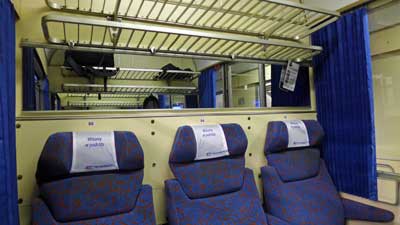
The good news is that the trains operating in this region, and the buses that operate alongside and/or where trains aren’t running, are quite cheap. So if any significant part of your trip will be into this region, a rail pass doesn’t make sense.
Basic types of Eurail Passes
Long gone are the days of the simple options, replaced by specialized passes that are meant to appeal to different styles. It should be pretty easy to figure out which is best for you, and then keep going down the page to decide if it’s worth it at all.
Eurail Global Pass – 4,5, or 7 days within 1 month or 10 days within 2 months
Until recently the minimum number of travel days with 10 days within 2 months, but now you can buy as few as 4 days within 1 month for about €200 to €250 (for first class). This can actually be an interesting strategy if you are planning many shorter and cheaper trips (like within Italy or Eastern Europe), and also 4 or 5 longer trips such as Berlin to Amsterdam. This way you can buy only 4 or 5 travel days and only use them for your most expensive travel days, and just pay as you go or buy cheap advance tickets for your other journeys.
Eurail Global Pass – 15 to 90 consecutive days
This variation allows for unlimited travel on the system for between 15 and 90 total days. They are really only a good idea for people who are certain they are going to travel very often, with much of it being in the north of Europe. The problem with them is that if you really try to get your money’s worth, you will probably ruin your trip by spending too much time on trains in general. On the other hand, if you will be in Europe for 2 or 3 months and plan on traveling around a lot, you can get a LOT of use out of a longer pass. The 3-month pass is around €900 so it’s literally about €10 per day. Imagine going back and forth between Berlin and Munich or Barcelona and Madrid for €10 per day!
One Country Pass
Obviously these are for travel within one country only. Again, they can be great deals if you plan on extensively moving around one particular country.
Where to buy your Eurail Pass
Eurail Passes are cheapest and easiest to buy online, primarily from two main sources which offer all the same products at the exact same prices:
This is a reliable company based in the Netherlands but with fulfillment offices in the US and Ireland. Price of Travel is a partner with this company, and if you use the links of this site we earn a small commission to help keep this site online. Eurail.com is usually cheaper than RailEurope (discussed below) by the way.
They were founded in the 1930s and are based in New York, but owned primarily by the French and Swiss rail companies. They offer free shipping (2 to 3 business days) on all orders of US$399 or more, although now that a mobile version is available, this is meaningless. Price of Travel is a partner with this company, and if you use the links of this site we earn a small commission to help keep this site online.
Reservations on European trains for rail pass holders
For most of the fastest trains between major cities you’ll need to reserve a seat even with a rail pass. It can usually be done just before you leave and the cost is usually around €5. Here’s a full list of which European trains require reservations and which don’t.
Reservations are required on all intercity (longer distance) trains in or involving France, Spain, Switzerland, and Italy. For most trains in Germany, Austria, Netherlands, Belgium, and most of eastern Europe, you can usually find trains that don’t require seat reservations. Often, if you don’t leave until after 9:30am or so, you can ride on any train with no seat reservation, but you have to research each leg to be sure.
How to determine which trains require seat reservations, and also get schedules
You can click on the link just above this section for a list of countries and their seat-reservation policies, but in some cases it’s actually a bit more complicated than that. For example, you can generally ride without a seat reservation on fast ICE (Inter City Express) trains in Germany if you depart after 09:30 in the morning. They do this to free up seats for business travelers who pay full fare, and they don’t mind filling up seats with rail pass holders on trains leaving a bit later.
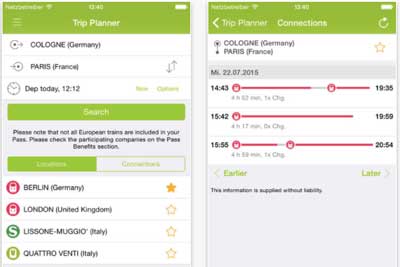
Night trains in Europe are making a comeback
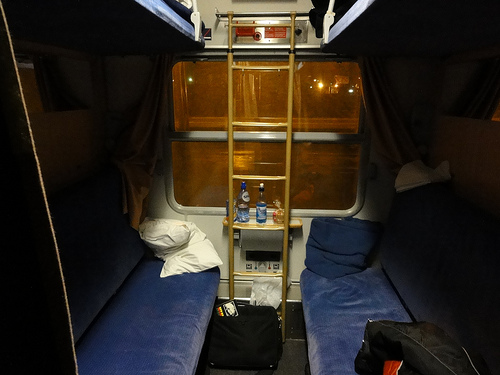
Fast forward to 2024 and night trains are not only expanding service, but they are very trendy. Some of it is nostalgia for the older way of getting around, but most of it is for environmental purposes combined with European hatred for the “low cost airline” experience with RyanAir and Easy Jet etc.
Personally I’m still not a fan of night trains because I find it difficult to sleep on them since they often get decoupled at interim stations in the middle of the night and then coupled onto other trains coming from other places, and I can’t sleep through any of that. But still, they are worth looking into and they are fun to try at least once.
A bit of warning that they tend not to be cheap and even if you have a Eurail Pass you’ll almost certainly want to book a sleeping cabin with a bunk or couchette, and that will come at an extra fee. On the other hand, if you are the sort of person who can sleep sitting upright in a normal seat, then that won’t cost any extra on most overnight trains.
Factors to consider when thinking about any Eurail Pass
Assuming you know which Eurail Saver Pass option is the best one for your type of trip by now, we’ll go over the main factors that should help you decide whether it’s the best idea for you.
Eurail Passes are best for standard ‘medium length’ journeys
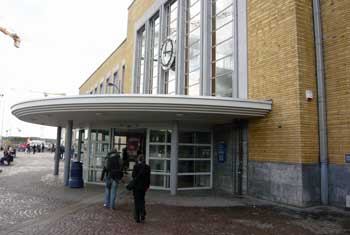
However, if you are determined to travel between Rome and Paris, it’s about a 14-hour journey that will almost certainly be overnight. In this case, a cheap plane ticket is probably better, although taking shorter hops on the train is even better, so spend a day or two in Milan or Lyon on the way instead.
And of course, if you prefer to stop in various small towns between the big ones, then a Eurail Pass won’t pay off, except for the traditional kind for unlimited travel in a given period.
Eurail Passes are better value in northern Europe, France, and Spain, and poor value in Italy
Once you do a bit of research you’ll quickly learn that train tickets (and almost everything else) are much more expensive in Germany, Netherlands, Denmark, Sweden, Norway, and Finland than they are in Greece, Italy, Portugal, and Spain. With this in mind, the regional passes can make sense if you are spending time in the south, but the Global Passes almost certainly won’t. Train tickets in Spain used to be fairly cheap, but in recent years they’ve added new high-speed trains between the major cities, and these are quite expensive.
Unlike most other countries, Italy really subsidizes its train tickets so they are quite reasonable even on travel day, and very cheap if you buy a month or more in advance. For example, you can go between Rome and Florence for around €49 if you buy on travel day, and as little as €19 if you buy well in advance. In most other countries, fares are double or triple that much for similar rides.
So consider your planned itinerary. If more than half of it is in the Mediterranean countries then look into a Regional Pass or just buy tickets as you go, because they tend to be pretty cheap. But if you are planning on spending at least half your time in Paris and places to the north of it, then a Eurail Pass is probably a money saver because those tickets are expensive.
Trains are almost always better than planes
Flying sucks, even in Europe
Until you’ve experienced the joy of traveling around Europe by train you might be tempted to “maximize” your time by flying low-cost airlines between each city. This would be a mistake. In order to get truly cheap airfares you have to purchase long in advance, buying non-refundable tickets. You might also have to commit to flights in the very early morning or in the late evening, because cheap tickets on convenient flights sell out quickly.
And again, most European airports are around an hour outside of the city. They are often on the main train lines, which helps, but still you have to deal with the madness of security and also try to get there at least two hours early. From one city center to any other city center it’s about 5 hours minimum, even if they are close, and those are pretty miserable hours.
Train travel is a positive experience

Not only are all the seats comfortable on trains, but you also have an interesting view most of the time. Better still, trains deposit you in the heart of every city, which is usually the neighborhood with the cheapest hotels and food. It’s a wonderful feeling to step off a relaxing train ride, buy a hot dog or sandwich at a local shop, and then be in your hotel room only about 10 minutes later.
Eurail Passes are better than train tickets alone
As someone who enjoys the process of crunching numbers and looking for value, I have to also mention that I’d buy a Eurail Pass even if it seemed like it would cost a bit more than the individual tickets. With a pass you get an extra element of freedom that is worth a lot more than you might expect until you’ve used one.
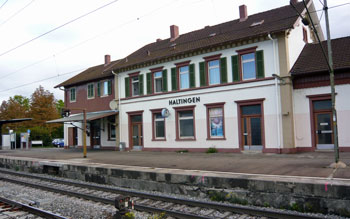
Let’s say you are heading from Amsterdam to Hamburg tomorrow morning. The 09:00 train you planned for might seem a bit ambitious after a long night out, so you can instead opt for the 10:00 or 11:00 train. As long as you walk into Centraal Station 10 or so minutes before departure, you are on. If you are flying you can’t change your ticket, and if you are buying train tickets as you go you have to be in line at the international desk at the train station at least 30 minutes early, and even then you might miss it if they are busy.
Freedom and getting to feel like a big shot
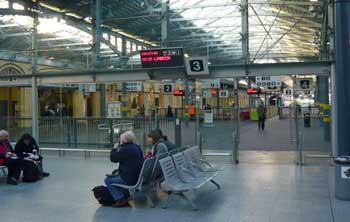
Let’s say you are staying at a hostel in Brussels, and two groups of new friends suggest that you go along with them to their next stops. One group is going to Bruges, which is a short and cheap journey, so you can join them by buying individual tickets (unless you have the unlimited pass, making it free). Then you restart your trip from Bruges, on to your next destination. The other group is headed to Berlin on a night train, which is long and expensive, but with a Eurail Pass you don’t even have to think about the cost. On you go, just like a rich person.
Buying a Eurail Pass is great for those who might run out of money
We all know people who keep meticulous track of every penny they spend, and who are always putting money away for a rainy day. And we all know people who can take a US$100 “entertainment fund” and burn through almost all of it in just a few hours. For the first type of person, a Eurail Pass can help you keep track of expenses, but it’s really the second type of person these are best for.
It’s sad to hear about people who have big plans to see their dream destinations, but they run out of money for transportation halfway into the trip, so they have to just stay put until they fly home. It happens. Locking in your major transportation costs before you leave home, and probably saving money in the process, is a wise move for anyone who isn’t as disciplined as they’d like with their money.
>>>Check prices on Eurail Passes
Bottom line: If you want to keep travel costs down, your choices will usually be a Eurail Pass or buying tickets at least a month or more early
In the last few years, almost every long-distance train ride in Europe has switched to a pricing system similar to low-cost airlines. In other words, tickets go on sale 2 to 6 months ahead of time at very low prices, and they keep getting more expensive as the train fills up and the date approaches. For most trips where a rail pass is possible, this is how things stack up:
Cheapest possible way: Buy advanced (non-refundable, non-changeable) train tickets at least 30 days in advance
Next cheapest way: Buy a Eurail Pass and make seat reservations as you go, usually only a day or less in advance.
Most expensive way: Buy train tickets as you go, or less than a week in advance.
Thinking about it this way should make the choice a bit easier. If you are the type who likes to plan each day and travel segment long before you even leave home, then buy tickets online for the best prices. This can be the best strategy for most shorter trips (10 days or less) because you simply don’t have enough time to change many things as you go anyway.
Buying a Eurail Pass won’t be quite as cheap, but you are buying a LOT of flexibility with the extra money. If you dream of making up your plans as you go, or even making up your plans just a few days in advance, this is almost always your best bet.
But if you wait too long, and just show up looking to buy train tickets as you go, they are going to cost a fortune. As recently as only a few years ago all seats would be the same price on many rail systems, so you could always just wing it. When each country computerized its rail systems so they can sell advanced tickets cheaper, they also had to keep track of seat reservations, so the whole pricing structure had changed to favor advanced ticket buyers and rail pass holders over those who’d prefer to just hop on any train as it is leaving the station.
Have a rail pass or itinerary question of your own?
It wasn’t planned but scores of people began asking me rail pass and itinerary questions at the bottom of this article and a few others. I’m happy to keep answering them and now I’m trying to organize them better as well so they are easier for other people to find.
If you have a question about specific types of European rail passes, please ask it in the comments below.
But if you have a question more about a European itinerary or other non-rail-pass questions, please click over to the European itineraries Q & A article and ask in the comments of that one.

Roger! thank you so much for your fast reply!!
Actually you have been one of the fews that has said that this could be a great vacation!
We would really like to go to Spain and Portugal mainly for the better weather, but we thought as it is very far away from our others destinations it could make our trip to fast paced(or to expensive!)
And your idea of suddenly taking a train up to Copenhagen sounds amazing! but again im worried about time and money! because we will always try to avoid train reservations and supplements!
As for spending Christmas in Rome we really like the idea of having a lot of stuff around us and different activities to do! But as we arrive in Milan we will have to spend the first to weeks of our trip near there to be able to spend christmas there? And what about new year?
Also do you think it is doable to only go with a backpack considering that it is winter and winter clothes are very bulky?
Marion,
Doing a trip like this during the coldest months is not exactly ideal, but every season has its advantages. In this case you’ll find small crowds, low accommodation prices, and an easier chance to meet locals rather than just other tourists. And on a 2-month trip like this, I wouldn’t worry much about the distances of some train rides. You can get from Paris to Barcelona in about 7 hours, for example, and it’s pretty scenic and relaxing. From Barcelona to Madrid or Valencia is about 3 hours, so an easy ride.
Personally, I find those train rides of 3 to 7 or so hours to be peaceful and a nice break from sightseeing. They are also a bit tiring for some weird reason, but still fun and if you are paying for unlimited rides you might as well take advantage of that.
The seat reservation fees are mostly in France, Italy, and Spain. France in particular charges high fees on the popular high-speed routes, so plan those carefully or it could add up. In Italy and Spain it’s usually €6 to €10 per journey, and in Italy you even get a drink for that. In most of the northern countries, you can ride for free as long as you start after about 9:30am or so, so you aren’t competing with business travelers on the busier trains. Even then, if you have to pay even €10 extra to take a train to Copenhagen, it’s totally worth it. And the ticket itself would cost €100 so only having to pay for a seat is cheap.
I recommend that you figure out your Christmas plans as you go. You’ll have no trouble getting dorm beds, so you can make your decision almost at the last minute. As for New Year’s Eve, every large city will have a big celebration, though none of them stand out as something you can’t miss. No matter where you are, it will be fun.
If you can do this whole trip with a backpack each, that would be ideal. You are going to do laundry many times along the way, so there’s no reason to bring so many outfits that you can’t fit them in a normal backpack. In the winter the tricky part is obviously bringing the right types of clothes. It’s a cliche, but layers are the key. You don’t want TOO heavy of an outer jacket that is so warm you can’t wear it indoors. And you’ll also want one or more sweaters or other layers, so you can put them on and take them off as the weather dictates throughout the day. There are many tips for this online, so research a bit and you’ll be fine.
As always, let me know if you have any other questions. -Roger
Hello! So me and a friend( both female 19y) will be traveling through Europe for 8 weeks( December 12 – February 5), starting and ending in Milan, which was the cheapest option considering where we are from.
We Will most definitely be buying an Eurail Global pass for 2 months unlimited, because we really like the freedom you get to make changes to your itinerary as you go.
But I still want and need your help with our ideas of where to go and our budget, because we would like to spend as low as possible without sleeping in a dumpster. But we are completely fine with hostels and buying food on the street and supermarkets.
Ideally we would like to go to
Slovenia( Ljubljana, Bled)
Croatia( Zagreb, Split,Hvar)
Hungary(Budapest)
Austria(Vienna, Salzburg, Hallstatt)
Czech Republic( Praga, Cesky Krumlov)
Poland( Krakrow, Wroclaw, Auschwitz)
Germany(Berlin!, Munich, Nuremberg, Dresden, Hamburg, Fussen)
The Netherlands( Amsterdam, Delft, Utretch)
Belgium
France( Lyon, Bordeaux, Tours, French Rivera, Annecy, Carcassone)
Spain( also Portugal, but we know it is to far away so we will probably just end up going to Barcelona)
Switzerland(? not sure because it is really expensive
Italy( Florence, Venice, Rome, Cinque Terre, Sorrento)
These are just ideas I would really apreciate your thoughts and comments on it; it is not definite and can be changed according to what you say. We would also like suggestions on places to add and/or omit! and what would your ideal 8 weeks winter Europe itinerary be!!!
Please! all comments are appreciated!
Also what are the best places to spend Christmas and New Years that wont break our bank?
We are both history buffs!(especially WW2) and like pretty places and cool places with lots of stuff to see and do!
Thank you very much!!
Marion,
This sounds like it’s going to be a fantastic trip. Your current itinerary list looks great and I don’t have too many comments really, but I will throw a few things out there.
The big factor in where you guys go will be the fact that it’s winter. Things in the big cities and larger towns are mostly the same in winter because they are always packed with residents. But beach towns and other summer-oriented places will be mostly empty with many hotels and restaurants closed for the season. Your list is mostly cities, except for perhaps Cinque Terre, which will be very quiet in the winter, so you should be fine. Still, aside from Nice, the French Riviera will seem half closed down, so keep that in mind.
That time of year, and with an unlimited travel rail pass, you’ll be able to go anywhere you want at any time. There will be hostels open in all of those places, with empty bunks and low rates. There will also be airbnbs and other apartments that will be available and so cheap that you might prefer them in many places. Aside from Christmas week, you’ll be among the very few foreign travelers in these places. That will be fun, but of course the weather will be cold and the days are short.
As far as your list goes, it looks really solid with only a few possible exceptions. Zagreb isn’t very interesting compared to Split or Dubrovnik, for example. I spent 3 days in Wroclaw a couple years ago, and while it’s a nice town with an attractive town center, it’s really not very interesting either. Nuremburg and Dresden would be on that list as well. What I’ll recommend is to keep your plans open and then decide on where you want to go as the trip goes on. If you spend 3 days in one town and then go only 150km to another town, they will be quite similar, of course. You might be motivated to make some big moves in order to get as much contrast as possible.
For example, from Berlin or Hamburg you could take the train to Copenhagen in 5 to 7 hours. Copenhagen is a stunning city, even during the short days of winter, and its inhabitants are equally stunning. It’s not cheap, but staying in a hostel and avoiding fancy restaurants will keep it in a good range. If you can take any train, you might as well use the pass to the fullest. I’ll be happy to offer more advice on that as you prepare.
Also, I’ll recommend that you include both Spain and Portugal on this trip. Since the weather in that area is decent even in winter, those cities stay fairly alive that time of year. Barcelona is the place to start, but also Valencia, Madrid, and Lisbon are all very worthwhile.
As for where to spend Christmas and New Year’s, you will have plenty of great choices. Some cities, such as Rome, get really crowded during those holidays, but it’s mostly with families and people staying in hotels rather than hostels. So for you, as long as you book a dorm at least a week or so in advance, you could be almost anywhere. On Christmas itself many things will be closed in many cities, of course, but that is for one or maybe two days. And in a few cities, such as Amsterdam, the main holiday is a few weeks earlier. The bigger cities such as Berlin will be the most fun and offer the most choices.
And again, that time of year you’ll have an easy time finding beds and seats on trains, so you can just move around as the wind blows. Right now the cold weather and short days might not seem too bad, but when you are there you might get sick of them so heading down to Spain could be appealing. I’m happy to offer more advice, so keep in touch if you like. -Roger
Hi Roger,
what an amazing site you have, so informative & every single query so wonderfully explained. That motivates me to ask you to guide me. We are a family of 3 [including my 10year old] travelling to Europe in beginning Oct. arriving Amsterdam on 1st oct, & departing from Paris on 15th. The rest in between is not planned but I do want to do a few things.
1. show snow to my son. prefer french alps as have seen swiss alps myself,
2. take him to legoland
3. visit Kortrijk
4. basel/ lyon – need to choose between the two.
we have a friend in london as well as in Oslo. Do you think we could include one of these & what is the best way to make the best of this trip.
Thanks a bunch
Hi again roger,
if I able to show snow to my son in Annecy/ Andorra then I can easily skip swiss.. its fine if we dont get to ski, so long as he is able to make a snowman.. 🙂
Thanks again
Again, I think you’ll have to get to a much higher altitude to be able to touch the snow in October. Only the highest peaks in the Alps have snow year round, and even the mountain towns don’t usually get snow until mid December most years. -Roger
piyusha,
Thank you. As you mention, you’ll need to get to a really high altitude to see snow in October in Europe. I’m not familiar with the resorts in the French Alps, but it should be doable as long as you go to one of the higher spots.
Legoland should be fun, and Copenhagen is a wonderful city for about 3 nights.
I’ve never been to Kortrijk or even heard of it. It’s not one of Belgium’s main tourist cities, but it sounds like you have a specific reason to go so I’m sure you’ll enjoy it.
Basel and Lyon are both more known as business cities rather than tourist cities. If you’ve already been to all of Switzerland and France’s best destinations, then those could be good choices. But unless you have specific things you want to see in either of them, I don’t know how entertaining they’d be.
Obviously London (where I’m based at the moment, actually) is one of the world’s great cities for tourists and many other things, so if you can include a side trip here by Eurostar before heading back to Paris, I’d recommend it. Oslo, on the other hand, is kind of a dud. Bergen is the best tourist destination in Norway, and the fjords and countryside are also nice. Oslo doesn’t really have much to offer, and it’s very expensive. I hope this helps. Let me know if you have any other questions and I’ll be happy to answer. -Roger
Thanks Roger very much for your reply.
that is not a great news for me 🙁 Do you suggest then I do Bordeaux instead of Andorra &Luxembourg instead of annecy, since there may be no snow there after all..
since we would be landing in Europe on 2nd Oct & leaving on 14th & checking out 7places… amsterdam, kortrijk, luxomberg/ annecy, lyon, toulouse, andorra/ bordeaux & finally paris, is there any cost effective travel you can suggest? we are a couple with a 9year old.
Many thanks
PS: there is no intimation on your replies via the email provided. actually when i was googling andorra to paris, is when I got directed here. :O wish I could have seen your reply earlier. also when I reply I have to go to page down to reply.. just some suggestions since you are doing such a wonderful job of helping travelers from all quarters..
Piyu,
It’s hard for me to make recommendations on itineraries like that, without knowing your specific tastes and goals. Each of the places you mentioned has quite a bit to offer, although I haven’t yet been to Andorra and I’m less sure about that one. I think that if you go to the places that sound interesting to you, then you’ll have a great time. On the other hand, I normally recommend staying 3 nights in most places that you visit, so trying to visit 7 cities in 13 days really seems like rushing it.
As for cost effective travel, you definitely want to go by train, and it will be cheapest if you buy your tickets as far in advance as possible. Here is my article on how and where to buy European train tickets in advance.
Sorry to hear that the email notification didn’t work. I’ll look into that. -Roger
Hi Roger,
I’m confronted with a peculiar problem. My agent has blundered and entered my gender wrong and so my Eurail pass mentions Mr instead of Ms. When confronted he is assuring me that this will not be a problem as per the written assurance of Eurail’s CSA for India M/s Amigo Travels, the hardcopy of the letter which he wants me to carry along with the pass. Can you please let me know what is the prudent thing I should do.
Krishna,
I don’t work for Eurail or the railways so I can’t say for sure. But my best guess is that you’ll be fine. You need to show your passport each time you use your Eurail Pass, and since the name will match properly, I’d imagine that the ticket people wouldn’t even notice the gender, or even care if they did see it. And with the letter, I’m confident that you’ll be good. Have a great trip. -Roger
My boyfriend and I want to travel to at least 5 countires (definitely France, Italy, Switzerland, Spain, and the Netherlands), probably for approximately a month. Is it worth us getting Eurail passes? We’d get 2nd class.
Soph & Elliot,
If your main goal is to drift around those countries making plans as you go, then a Eurail Pass is perfect. So from the sound of it, you are ideal for a pass. If you had a fixed itinerary and knew all of your travel dates in advance, then you could probably pay less overall for individual tickets bought two months out. So a Eurail Pass isn’t necessarily the cheapest way to do it, but it gives you almost complete flexibility to make plans as you go, which is an excellent feature for trips like the one you seem to have in mind.
One thing though, you might have to get a Global Pass if you want to hit Amsterdam. You can only do a 5-country pass for bordering countries, and the Netherlands doesn’t border France. Let me know if you have any other questions and I’ll be happy to help. -Roger
Hi Roger, my wife and I will be going from Berlin to Prague to Vienna to Hallstatt to Salzburg, and then on to Munich in September. Do you recommend the Eurorail pass or individual tickets since we know our itinerary. If you recommend the Eurorail pass would we buy a three country pass and how do you reserve tickets on the Eurorail pass? Thanks, Jeff
Jeff,
Eurail Passes are only good value for trips of at least 5 segments and where you want to be able to make plans as you go. Otherwise, individual train tickets are going to be cheaper, especially if you buy them at least a month or two in advance. You should be able to buy most or all of them from bahn.com, which is the official German rail site. Have a great trip. -Roger
Thank you Roger,
I also need to know where & how can I do the reservation & pay the supplementary cost for this night train. Can I do this anywhere , for instance in Italy.
Brijay,
For any night train you need a seat or bunk reservation, and you can do that in person in any of the larger train stations in any of the countries you’ll be visiting. You might be able to do it online, though it might be hard to do the Austria supplement that way. Good luck with this. -Roger
Thanks Roger,
You will be the best person to know where I can pay this supplementary charge. Can I maybe pay the ticket collector at the time of boarding the train. But that will be past 11 pm. Will it be easy to find him. Because otherwise that will leave me no option but to take a chance and hope nobody finds out.
Hi Roger,
Though I have a 4 country eurail pass, since it doesn’t cover Austria I was wondering if I could take the night train from Munich to Venice. Not sure if it crosses Austrian border & if so would my ticket be valid
Brijay,
From Munich to Venice the trains all go through Austria. The only way to avoid that would be to go Munich to Zurich to Milan to Venice, which would take a long time. Unfortunately, your 4-country pass would require a supplement for the Austria part of that night train. Still, it might not be more than €40 or so. Have a great trip. -Roger
Hello Roger!
As always, thank you for the tips. We might do your first suggestion and skip Spain for now. We’ll definitely let you know how our plan ends up. Thank you and God bless you my friend!
Thank you for the very quick response Roger! Your suggestions gave us some really good options and I thank you for that. Regarding your first option, is it worth it to visit Prague and Salzburg? If you were to choose, which one is better? Regarding our train ride, do we need to reserve the seats in all of those trips? Also, is it better to take an overnight train from one city to another? Thanks. We really want to see Spain, but it looks like it’s going to be a long shot if we’re taking the other route. You’re right, flying there would be the best option if we really want to see it I guess. Considering the last option you gave us, if I understood that correctly; we will just use 4 rail pass days (Amsterdam-Berlin-Paris-Barcelona-Madrid) then take the flight going to Italy and use the remaining rail pass there? Once again, thank you and I’m sorry if I sound a little bit confused about our itinerary. So many places we want to visit, so little time. Thank you and I hope to hear from you soon my friend. God bless!
Jonathan,
I’ll respond to your questions in the order they came up…
Prague is a large and beautiful city with great culture and varied and interesting architecture. It’s also quite affordable compared to most of the rest of Europe. Salzburg is a small and historic town at the foot of the Alps, with a castle looming above it. Mozart was born and lived there so there are many attractions dedicated to him. But the Sound of Music movie was also famously set and filmed there, and there are these wonderful bus tours that take you to the various locations. The bus tours are fun and interesting even for those who haven’t seen the movie, and even better if you have. In other words, Prague and Salzburg are nothing alike, and if you have time to see them both I’d do it.
You won’t need to reserve seats on the trains until you are headed into Italy. In the Netherlands, Germany, Czech Republic, and Austria, you might need a seat reservation if you are taking an Intercity express train before 9am or so. But if you leave after that (usually a good idea anyway to avoid the business crowds), you can usually just hop aboard and find a seat. Download the RailEurope app for your phone and you’ll have the whole train database without needing to be online. Not only does it show the schedules, but it shows which trains require reservations and which don’t.
The train into Italy and all of the express trains between the large cities will require a seat reservation of about €10, but they come with a drink (including alcohol), so it’s not a bad deal.
I don’t really recommend overnight trains, and they are becoming more scarce. You can read the main points in my article about night trains, and decide for yourself.
Yes, if you want to go through Paris and then to Spain, you’d use 4 rail pass days and then 2 more after a flight to Italy.
As always, feel free to ask about other things as your plans are coming into place. -Roger